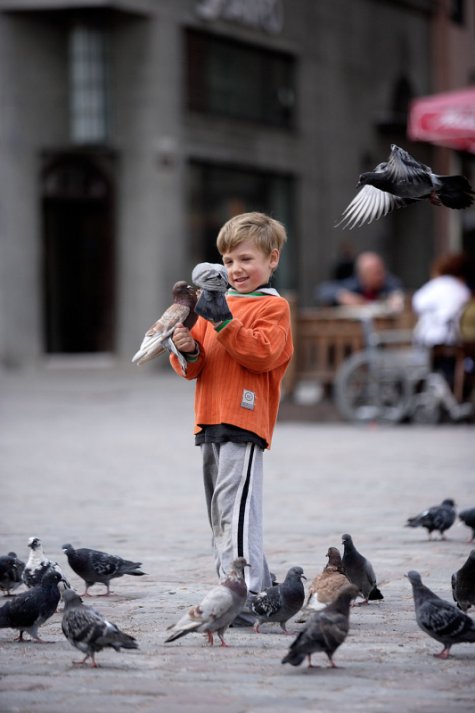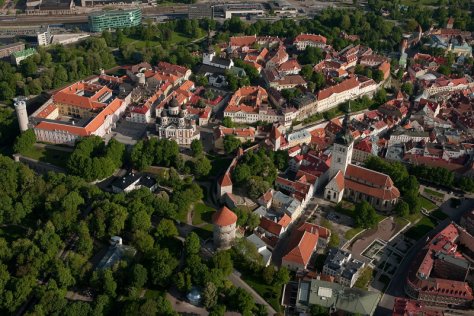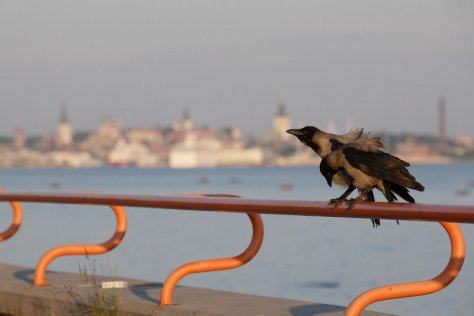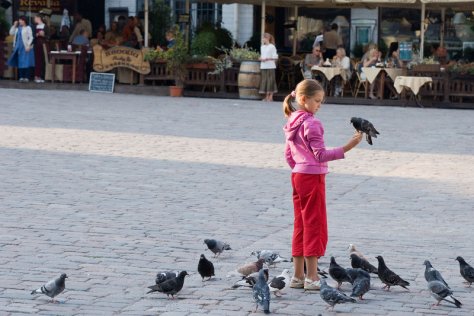Better a sparrow in hand than a pigeon on the roof
Text: Tiit Lepik
Photos: Toomas Tuul
Translation: Liis
Nature is an unambiguously clear and simple concept. Urban nature does not even exist according to theorists and practitioners. In their talk „Standing up for nature“ at the TEDxTartu Aleksei and Mattias Turovski concluded: “Don’t protect nature, love nature instead because we will protect what we love anyway!“
We live in an urbanised country. A majority of people inhabit semi-natural communities at most in practice. Our lives are spent in more or less secure artificial conditions. Let us then try to keep at least this small measure of nature along with us!
Some are lucky. A pigeon actually in hand…
The rocky city of Tallinn has been fortunate. Seen through the eye of a pigeon even the heart of the city has green spaces.
Birds in wind. The sea lets us feel a measure of nature’s power.
All is not lost if children take notice of the life around them. Noticing is half-way to caring and taking care.
I asked my friend Toomas Raudam why the boy’s eyes in the first photo shine.
"Actually the eyes of all humans shine, and so, although non-reflectively, do those of animals, but all do not show it equally much. Brown eyes shine more, as do weeping eyes. Those who are more emotional themselves, and maybe bolder, are better at noting the brilliance of an eye, because looking long into the eyes of another human is hard – the eye shifts away, which on the other hand is another factor in creating the brilliance. You must move a shard of glass in your hand if you want to direct a light beam from it. Rather naturally the sparkle is greatest from the ones whose communications with the world are just emerging – small children. “Grandfather your eyes shine!“ my grandchild Mona told me, and my heart beat faster. I didn’t tell her that they were shining because of the brilliance in another pair of eyes. Mona’s eyes probably shine even at night. Finally, I will send you a childhood photo, my latest book "Ja ära Kafkat unusta! – And don’t forget Kafka!“ ends with it. In principle it is the same photo that you asked me about.“
Well, yes. I had hoped for wise words from Toomas about children beginning to notice life around them and so on. But as always, he surprised me, positively. There is certainly a magic in everything natural. Sometimes we are reckless with it. Once, together with Aleksei Turovski, we arranged an excursion to Käsmu for primary school children. I trudged along in the forest at the rear of the group. A little boy came to show me stones that he had collected in his pockets. He talked of wanting to become a geologist. He was particularly interested in palaeontology. I have no idea where the boy had found the words. Our talk was briskly cut off by a teacher who told the boy to get rid of the rubbish. The teacher may have been in a bad mood.
”Better a sparrow in the hand than a pigeon on the roof”*. Another old nonsense saying that prevents peaceful sleep and creates all sorts of tangled reflexions.
*Translator’s note:
Literal translation of Estonian saying. The English version is “A bird in the hand is worth two in the bush”. Birds and chances of catching them in a few more languages HERE





.preview.jpg)







